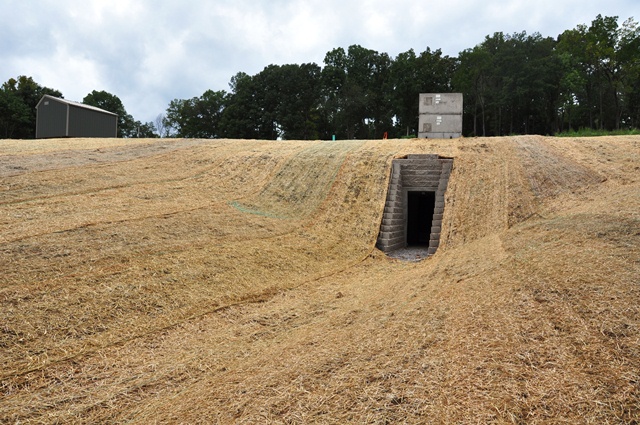 The bat cave created by The Nature Conservancy chapter in Tennessee can be disinfected after each hibernation season, which may offer some bats a refuge from white nose syndrome (WNS). According to the Leaf Chronicle, the cave cost $300,000, which was raised entirely from private funds.
The bat cave created by The Nature Conservancy chapter in Tennessee can be disinfected after each hibernation season, which may offer some bats a refuge from white nose syndrome (WNS). According to the Leaf Chronicle, the cave cost $300,000, which was raised entirely from private funds.
The article also notes that the cave was built near an existing bat hibernation site.
Lots of details in the Leaf Chronicle article. Read it here.
Read a shorter article in Popular Science, here.
The Nature Conservancy press release is here.
A Nature Conservancy interview with project leader Cory Holliday, here.
What the two reported articles don’t say is that the cave is an answer to a common question about possible solutions for white nose syndrome: Why don’t you just disinfect the cave with an anti-fungal? (Any doubts that this is common? See the comments after the articles.) The short answer is that a cave is a complex ecosystem and fungi play an important role. So far there isn’t a way to kill just the WNS fungus without killing other fungi in the cave.
The artificial cave doesn’t have an ecosystem, so it can be sterilized when the bats leave in the spring. This should prevent healthy bats from be infected from fungi in the cave the following winter, perhaps lessening the virulence in that cave.
It’s pricey, time-consuming and takes some of the wildness away from the bats, but compared to having wildlife rehabilitators raise a “Noah’s ark” population (which has been discussed at times with some seriousness, and even tried with Virginia big-eared bats), it’s likely cheaper, easier and less disruptive.
…And, this just in: An Associated Press story (here in the San Francisco Chronicle) does get into some of these details. Read it here.
Photo: View of the artificial bat cave, with the human entrance below and the bat entrance above. Photo credit: © Cory Holliday, The Nature Conservancy
